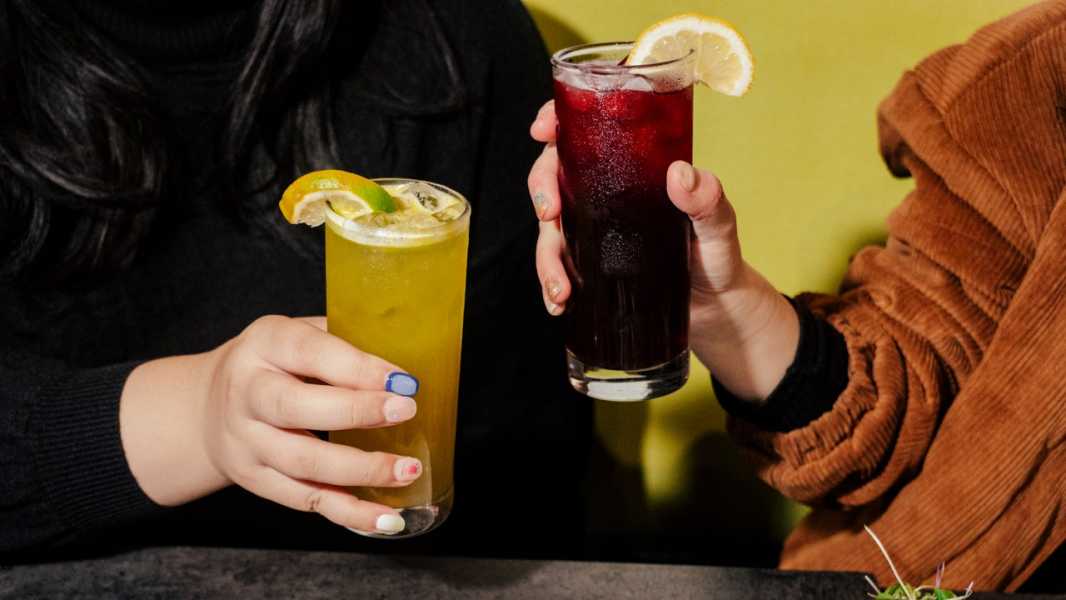
Save this storySave this storySave this storySave this storyYou’re reading the Food Scene newsletter, Helen Rosner’s guide to what, where, and how to eat. Sign up to receive it in your in-box.
I’m not sure what “healthy” really means, when it comes to describing food. Is it food that’s low calorie? Low fat? Nutrient dense? Minimally processed? It’s one of those fuzzy, qualitative terms that speaks more to a feeling than to anything else: an ambient virtuousness whose parameters are porous and ever-shifting, encompassing and discarding fad ingredients and findings from the latest buzzy research study. As a matter of personal policy, I am skeptical of restaurants that foreground the concept of health, which isn’t to say that it has no home in the world of dining out. It’s just that I tend to think that the primary job of a restaurant is to offer experiential pleasure rather than moral fulfillment.
HAAM
234 Union Ave., Brooklyn
(Dishes $10-$29.)
Take, for example, the kaleidoscopic riot of flavors in the Buss Up Shut Roti Plate at HAAM, a Caribbean restaurant that opened in Williamsburg last fall. A paratha roti, pliant and chewy—the so-called busted-up shirt that gives this iconic Trinidadian dish its name—is piled on a large dish, surrounded by a big, vivid-orange swipe of earthy-sweet mashed pumpkin; a scoop of tender stewed greens; and a dollop of curry mango that’s sharp and deep and hot enough to make every neuron in your brain fire at once. HAAM, it turns out, is an acronym for “healthy as a motha,” but there’s nothing dutiful or diminished about the dish. It elicits pure sensory happiness.

The mofongo is studded with bits of smoky tempeh, topped with a stack of fried oyster mushrooms, and served with a coconut-cream curry.
The “motha” in question is HAAM’s chef-owner, Yesenia Ramdass, a mom of three from Washington Heights who grew up in an omnivorous Dominican American family but got into veganism as a teen after stumbling onto a copy of the infamous diet book “Skinny Bitch.” She devoted herself to re-creating meatless versions of her family’s Dominican favorites—and, after marrying her husband, Randy, to veganizing the foods of his home country of Trinidad. All of the cooking at HAAM is plant-based (even if HAAM is pronounced like the meat). The curry chicken on the Buss Up Shut plate, stewed and spicy and turmeric yellow, is actually “chik’n,” a meat substitute that almost perfectly mimics the texture of real bird. What looks like crispy fried chicken atop Ramdass’s mofongo is a teetering stack of oyster mushrooms. The “shark” in her bake and shark, a Trinidadian flatbread sandwich, is banana blossom, spiced and deep-fried and strikingly reminiscent of the fried shark it stands in for. The space is white-walled, with basket-cane lights and painted murals of tropical greenery. Even on a rainy day, it feels like the sunshine is pouring in, especially if you’re sipping on some fresh-pressed sugarcane juice or a tall glass of sorrel punch, Tyrian purple, made from steeped hibiscus flowers and laced with clove and cinnamon.

HAAM’s chef-owner, Yesenia Ramdass, grew up in a Dominican American family and got into veganism as a teen.
The restaurant keeps slightly bizarre hours, opening at 1 P.M. during the week, a little late for the lunch crowd, and closing most nights at nine. When I dropped in recently for an afternoon meal, a server suggested that I try the Chimichurri Chunk Steak. At twenty-nine dollars, it’s the most expensive dish on the very reasonably priced menu, and is made with a soy-and-wheat-based faux beef from a brand called, inelegantly, Chunk Foods. The dish that arrived so eerily resembled an actual beef filet—seared until crusty outside, tender pink and juicy within—that I did a double take. Served alongside fried plantains, rice, and a bowl of soupy, savory black beans, it was marvellous and uncanny, especially under a drizzle of Ramdass’s ultra-garlicky chimichurri.

A plant-based steak looks just like an actual beef fillet, crusty on the outside and tender pink within.
Helen, Help Me!
E-mail your questions about dining, eating, and anything food-related, and Helen may respond in a future newsletter.
Ramdass first did HAAM as a pop-up, in 2020, and eventually landed a stand at Smorgasburg. Social-media-friendly snacks from the business’s earlier incarnation are still available, such as a gorgeous mess of barbecue-sauced faux meat with tamarind chutney, cabbage slaw, and dairy-free queso piled onto a fried plantain split lengthwise, like a savory banana split. But the stability and patience of a dine-in crowd gives Ramdass an opportunity to explore flavors and presentations that are a little bit more grown-up and refined. That mofongo, studded with bits of smoky tempeh, is served atop a pool of pale coconut-cream sauce perfumed with curry. The tender yucca fries that come alongside a jerk-mushroom patacón (a Dominican sandwich made with fried plantains in lieu of bread) are plated with geometric precision. A ceviche appetizer is made with hearts of palm, whose brisk salinity and bouncy texture serve as a clever dupe for fish or shrimp. Mixed with a colorful confetti of fresh vegetables, it is plated on rounds of tostones and topped with a toothpick bearing a HAAM-branded paper flag, as if it had been claimed by a tiny, intrepid explorer. The dish is lime-bright, salty, and bracingly alive, especially if you add a few dashes of the fiery house-made Hot as a Motha sauce, made from peppers grown by Ramdass’s father-in-law. It’s a joy to eat—and, I suppose, it’s healthy, by some definitions, if you care about that sort of thing. ♦
Sourse: newyorker.com